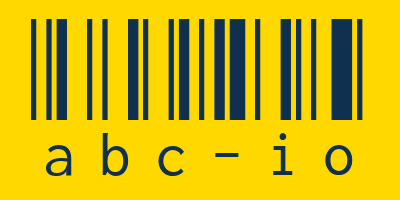
As quantum computing is attracting unprecedented investment, with $3 billion flowing into the sector in just the first half of September through major venture deals and public markets, critical infrastructure challenges remain and threaten to undermine the technology’s ambitious scaling goals.
While quantum computers promise revolutionary advances in artificial intelligence, drug discovery and materials science, they face fundamental bottlenecks beyond chips and cooling.
Often much of the equipment inside these systems was developed decades ago and does not function reliably and cannot be optimized for the extreme temperatures quantum computers function at.
Interim CEO at Delft Circuits.
At the heart of this challenge lies an aging technology that quantum computers have inherited from classical electronics: coaxial cables.
Designed in 1916 by AT&T, a century before the quantum era, these cables often serve as the nervous system of quantum computers, carrying control signals to individual qubits and reading out their quantum states.
However, as quantum systems grow larger and more sophisticated, coaxial cables are proving to be a critical limiting factor.
Their size, low capacity to carry signals and high failure rates make it impossible to connect and control thousands of qubits reliably.
And that’s problem because the industry now needs to increase qubit counts to get closer to delivering a quantum advantage for users.
Each coaxial cable requires significant space within the cramped confines of a quantum computer’s cryogenic environment, where temperatures drop to near absolute zero.
As systems attempt to scale from hundreds to thousands of qubits, the physical space required for traditional coaxial connections becomes prohibitive.
Even more concerning is the reliability issue. Coaxial cable systems introduce numerous failure points—each connection, joint, and component represents a potential source of system failure due to the expansion and contraction of repeated thermal cycles.
In quantum computing, where maintaining coherent quantum states is paramount, even minor signal degradation or thermal fluctuations introduced by unreliable connections can destroy the delicate quantum information being processed.
Innovative engineering provides and alternative for qubit connectivity
The solution to connectivity crisis in the quantum industry requires a fundamental rethinking of how signals are routed within cryogenic environments.
Advanced flexible cable technologies are emerging that can deliver dramatically higher channel densities in each cable, while actually improving reliability compared to traditional approaches.
These next-generation solutions integrate superconducting materials with advanced filtering and signal conditioning directly into multichannel flexible cables.
By consolidating multiple functions into a single, streamlined component, they can already achieve channel densities eight times higher than traditional coaxial systems at equivalent cost.
Industry roadmaps suggest even greater density improvements, up to 32 times what traditional coax can offer, will be available within 18 months. Capacity will continue to rise from there as the technology matures.
By simplifying the overall system architecture and reducing the number of individual components and connection points, these advanced cable systems can deliver between five and twenty times fewer failure points compared to traditional coaxial cable.
This improvement in reliability is crucial for quantum systems, where any signal degradation can compromise quantum states and computational accuracy.
Demand for is rapidly increasing
The urgency of solving this infrastructure challenge is intensifying as quantum computing companies accelerate their push toward larger, more powerful systems.
Quantum computers today typically operate with dozens or hundreds of qubits, but the industry’s roadmaps call for systems with thousands in the near term and millions of qubits within the next decade.
The global artificial intelligence boom has only accelerated these demands. As AI applications consume ever-increasing computational resources, quantum computers are positioned to take on specialized workloads that will complement or surpass classical computing in various domains.
Applications ranging from training deep neural networks to optimizing complex financial models could benefit from quantum acceleration—but only if we can produce the engineering needed to scale these systems to the necessary size.
This scaling pressure has created an urgent need for dramatically higher channel density in quantum I/O systems.
Where current systems might require hundreds of control channels, future quantum computers will need thousands or tens of thousands.
Traditional coaxial cable simply cannot meet these demands while maintaining the signal integrity and reliability required for quantum operations.
Perhaps most importantly, infrastructure improvements such as these maintain the signal integrity required for advanced quantum error correction techniques.
Low crosstalk, minimal noise, and stable thermal performance enable the sophisticated control schemes that will be necessary to reach fault-tolerant quantum computing.
Unlocking the true value of quantum through scalability
The development of scalable quantum connectivity solutions comes at a crucial moment for the industry.
With billions in new investment flowing into quantum computing companies, the pressure to demonstrate practical scalability has never been higher.
Infrastructure innovations which remove fundamental scaling bottlenecks caused by old-fashioned technology, could determine which companies successfully transition from laboratory demonstrations to full commercial systems.
For investors betting on quantum computing’s future, infrastructure scalability represents both a critical risk and a significant opportunity.
Companies which can solve the connectivity challenge may find themselves in a position to enable the entire industry’s growth, while those which cannot may face serious limits on their ability to scale.
As the quantum computing industry moves into its next phase of development, the spotlight is increasingly turning from pure quantum science to include the engineering challenges that will determine scalability.
The solution to this challenge may well decide which of the recent big bets on quantum technology ultimately pay off.
We’ve featured the best business laptop.
This article was produced as part of TechRadarPro’s Expert Insights channel where we feature the best and brightest minds in the technology industry today. The views expressed here are those of the author and are not necessarily those of TechRadarPro or Future plc. If you are interested in contributing find out more here: https://www.techradar.com/news/submit-your-story-to-techradar-pro











Add Comment